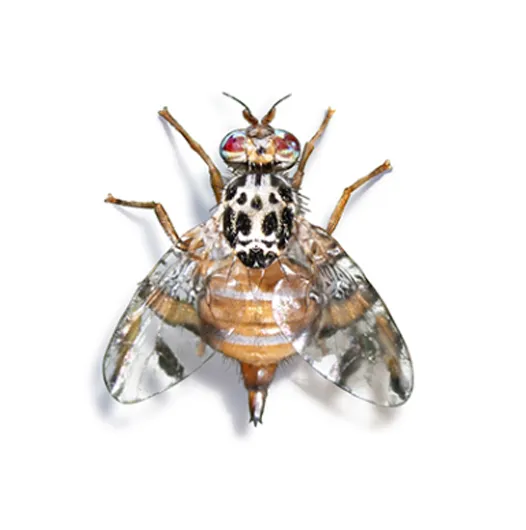Citrus fruits, pomegranate, persimmon, apricot, peach, fig
Adults are usually 2/3 the size of a housefly. The general color of the body is tawny. The wings are broad with black and pale brownish stripes.

Host Plants
Citrus fruits, pomegranate, persimmon, apricot, peach, fig
Adults are usually 2/3 the size of a housefly. The general color of the body is tawny. The wings are broad with black and pale brownish stripes.
The larvae feed on the fleshy part of the host fruits and cause softening and collapse in the fruit. Infected fruits prematurely ripen and fall.
Monitoring
Overwintering adults emerge in late spring and early summer. They mate and lay eggs on days when the temperature is over 16°C. In the Aegean region, it can produce 4-5 generations per year, and in the Mediterranean region 7-8 generations per year. The traps should be 3 traps/ha set after the trees have bloomed.
Mass Catch
The pest can give more than one offspring in a year. Therefore, when population growth is detected in monitoring traps, in September – October in citrus and in August – September in pomegranate, especially Satsuma mandarins, which are the earliest variety, and before the pomegranate varieties mature, the traps are hung at 15-20 m intervals.
Recommended Control
Types for This Pest